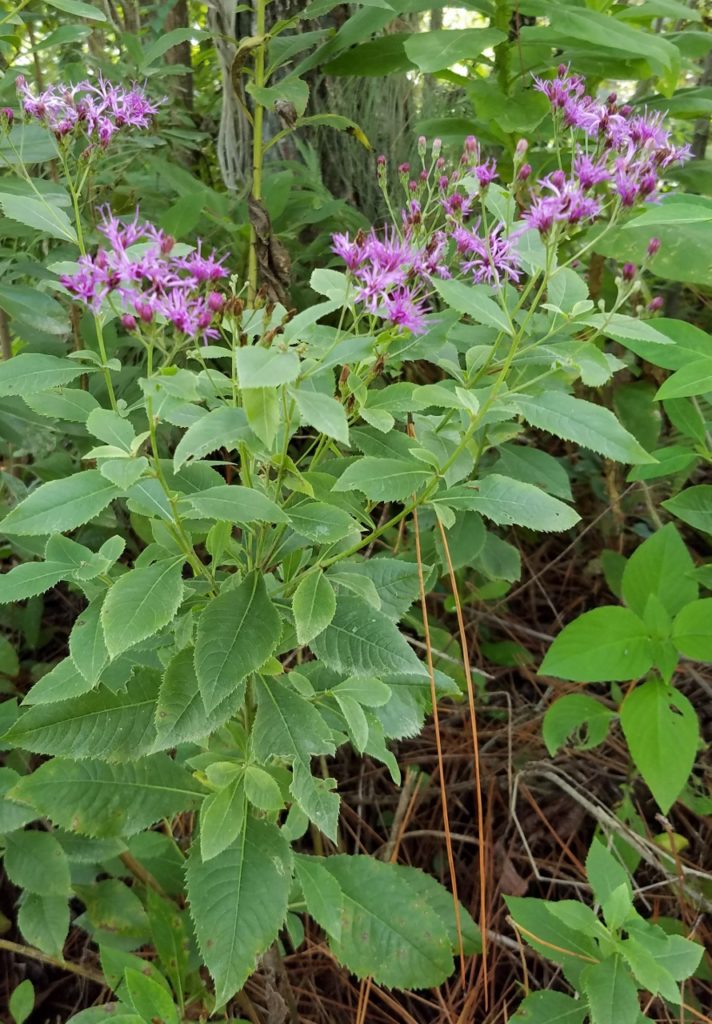
Ironweed
Vernonia gigantea
Ironweed or Giant Ironweed is found throughout much of the eastern half of the U.S. and Canada. It is a tall perennial reaching up to 10 feet, yet usually stays below four feet.
The elliptical leaves are up to 10 inches long and have serrations along the edges. Flowers are in clusters of deep purple that bloom in Florida from July to October. There are often some blooms throughout the year.
Giant Ironweed is found along moist woodland edges in full sun to partial shade. It can tolerate a little salt air if planted several hundred feet back of the dune.
This is an important flower for native bees, butterflies and other pollinators including hummingbirds. The seeds are wind dispersed. Several species of moth caterpillars, crickets, aphids and katydids have been seen feeding on the flower heads. These of course become bird food.
The growth is compact with short rhizomes branching off the main root mass. Seedlings come up everywhere in moderate numbers prefering moist or irrigated areas of the yard to germinate.
A woodland path can be lined with these purple flowers to create focal points that entice walkers to keep searching for more. They also make a great backdrop to flower beds.
Deer and other herbivores find this plant bitter and avoid it. It is not poisonous, but don’t eat it.
Try a mix with other woodland plants to create a natural feel to your landscape. Native ferns and grasses, Bear Claw, Frostweed, Seaside Goldenrod, Coontie, Native Plumbago, Red Salvia, Dicliptera, and Florida Pellitory Make good companions.
Florida Pellitory is the larval food for the red admiral butterfly and is edible steamed. It is tasty raw, yet the developing seeds and possibly some chemicals within its tiny leaf hairs may scratch the throat. Click here.